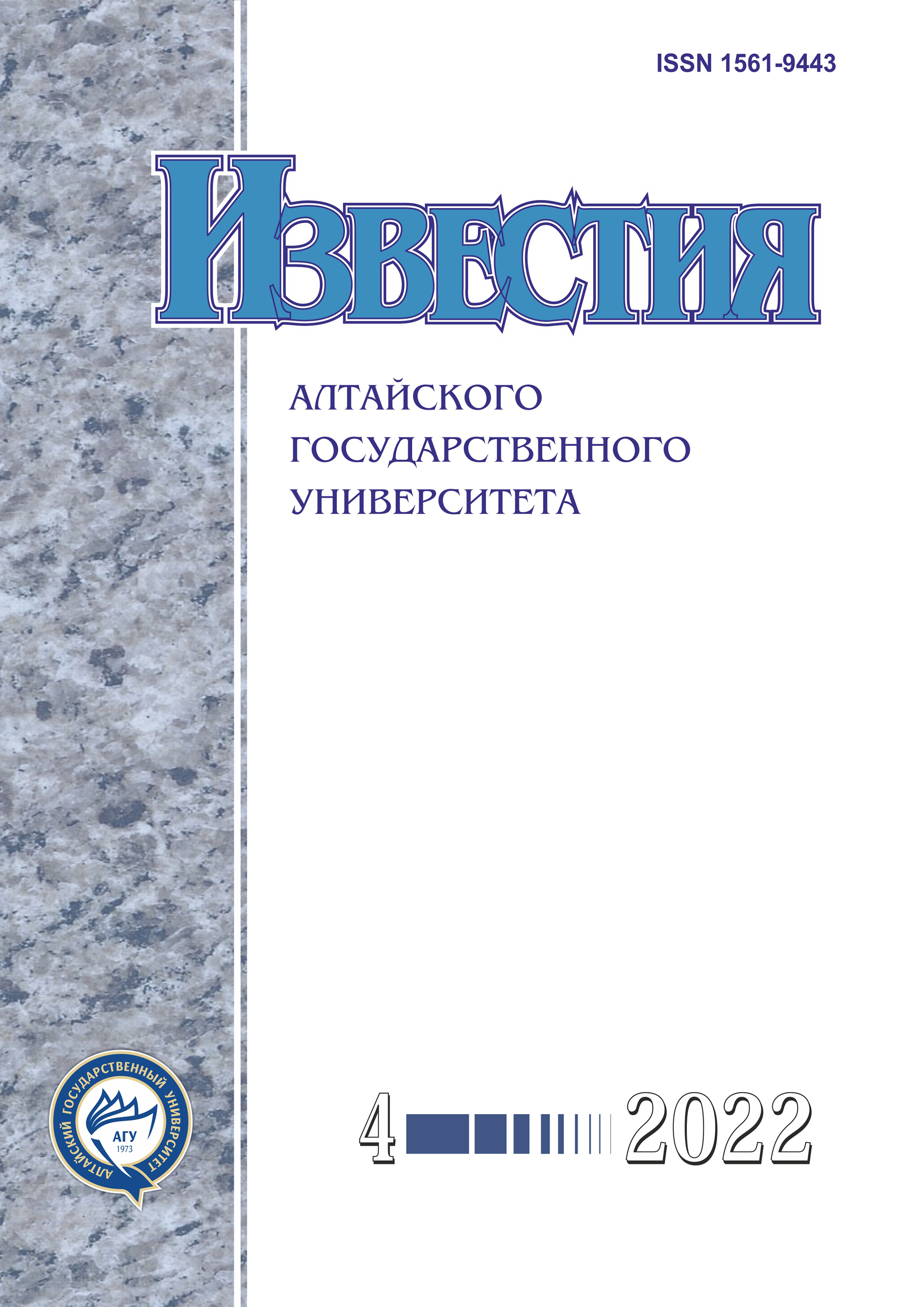Numerical Modeling of Biogeochemical Carbon Cycles in Swamp Ecosystems
УДК 574.4:52-17
Abstract
A dynamic model of biogeochemical carbon cycles in swamp ecosystems is proposed. There are fast and slow biogeochemical cycles. Fast cycles operate in the biosphere and include photosynthesis, vegetative growth, and decomposition. Swamp ecosystems are one of the significant reservoirs of biogeochemical cycles. It is known that huge reserves of carbon in the form of slightly decomposed organic matter are preserved in the swamps. They are active sources of methane and carbon dioxide runoff from the atmosphere.
Mathematical models of dynamic processes in ecology can be divided into two categories: quantitative and qualitative. Quantitative models, as a rule, are aimed at solving problems of predicting numerical indicators of the dynamics of real systems. They must be modified to consider specific climatic conditions, special types of swamp vegetation, and hydrological regime for their successful application.
Qualitative models written as systems of differential equations assume the finding of singular points, their classification and study for stability, the construction of phase portraits, etc. Such models rarely lend themselves to quantitative verification, but provide important knowledge and understanding of processes in nature. A qualitative study of the system of ordinary differential equations describing carbon cycles is carried out, the types of singular points are investigated, integral curves and phase portraits are constructed.
Downloads
Metrics
References
Список парниковых газов МГЭИК. https:// en.wikipedia.org/w/index.php?title = IPCC_list_of_ greenhouse_gases&oldid=1087125822 (дата обращения: 06.06.2022).
Блог Стива Истербрука. http://www.easterbrook.ca/ steve/ 2015/08/who-first-coined-the-term-greenhouse-effect/].
Сайт: Обсерватория Земли НАСА. Углеродный цикл. https://earthobservatory.nasa.gov.
Кашапов Р.Ш. Основные факторы и особенности пространственно-временной дифференциации углеродных циклов // Вестник Удмуртского ун-та. Серия: Биология. Науки о земле. 2008. Вып. 1.
Janse J.H., van Dam A., Hes E.M.A., de Klein J.J.M., Finlayson M. et al. Towards a global model for wetlands ecosystem services // Current Opinion in Environmental Sustainability. 2019. № 36.
Farmer J., Matthews R., Smith J.U., Smith P., Singh, B.K. Assessing existing peatland models for their applicability for modelling greenhouse gas emissions from tropical peat soils. Curr. Opin. Environ. Sustain. 2011. № 3.
Asaeda T., Baniya M.B., Rashid M.H. Effect of floods on the growth of Phragmites japonica on the sediment bar of regulated rivers: a modelling approach // Int J River Basin Manage. 2011. № 9.
Тарко А.М. Антропогенные изменения глобальных биосферных процессов // Математическое моделирование. М., 2005.
Кондратьев К.Я., Крапивин В.Ф. Моделирование глобального круговорота углерода. М., 2004.
Завалишин Н.Н., Логофет Д.О. Моделирование экологических систем по заданной диаграмме «запасы — потоки» // Математическое моделирование. 1997. Т. 9. № 9.
Федотов А.М., Медведев С.Б., Пестунов А.И., Пестунов И.А. О нестандартном поведении минимальной модели углеродного цикла // Вестник НГУ. Серия: Информационные технологии. 2011. Т. 9. Вып. 1.
Famiglietti C.A., Smallman T.L., Levine P.A., Flack-Prain S. et al. Optimal model complexity for terrestrial carbon cycle prediction // Biogeosciences. 2021. № 18. https://doi. org/10.5194/bg-18-2727-2021.
Эрроусмит Д.К., Плейс К. Обыкновенные дифференциальные уравнения: Качественная теория с приложениями. М., 1986.
Copyright (c) 2022 Егор Анатольевич Дюкарев , Сергей Петрович Семенов

This work is licensed under a Creative Commons Attribution 4.0 International License.
Izvestiya of Altai State University is a golden publisher, as we allow self-archiving, but most importantly we are fully transparent about your rights.
Authors may present and discuss their findings ahead of publication: at biological or scientific conferences, on preprint servers, in public databases, and in blogs, wikis, tweets, and other informal communication channels.
Izvestiya of Altai State University allows authors to deposit manuscripts (currently under review or those for intended submission to Izvestiya of Altai State University) in non-commercial, pre-print servers such as ArXiv.
Authors who publish with this journal agree to the following terms:
- Authors retain copyright and grant the journal right of first publication with the work simultaneously licensed under a Creative Commons Attribution License (CC BY 4.0) that allows others to share the work with an acknowledgement of the work's authorship and initial publication in this journal.
- Authors are able to enter into separate, additional contractual arrangements for the non-exclusive distribution of the journal's published version of the work (e.g., post it to an institutional repository or publish it in a book), with an acknowledgement of its initial publication in this journal.
- Authors are permitted and encouraged to post their work online (e.g., in institutional repositories or on their website) prior to and during the submission process, as it can lead to productive exchanges, as well as earlier and greater citation of published work (See The Effect of Open Access).








